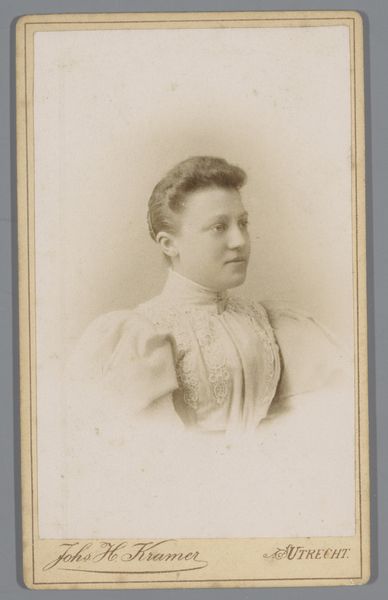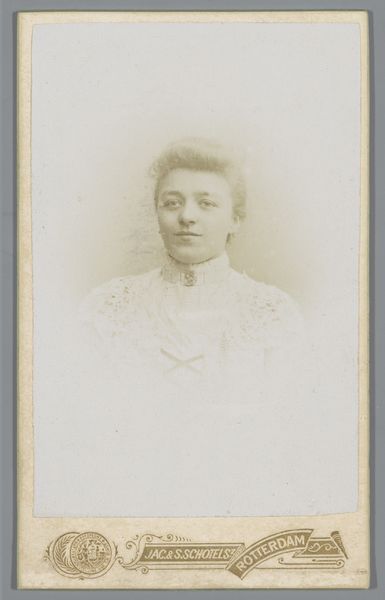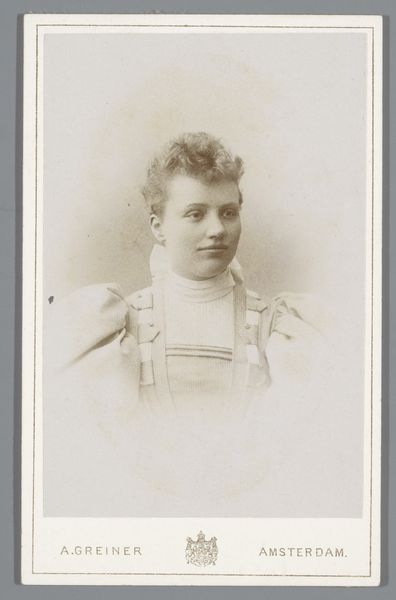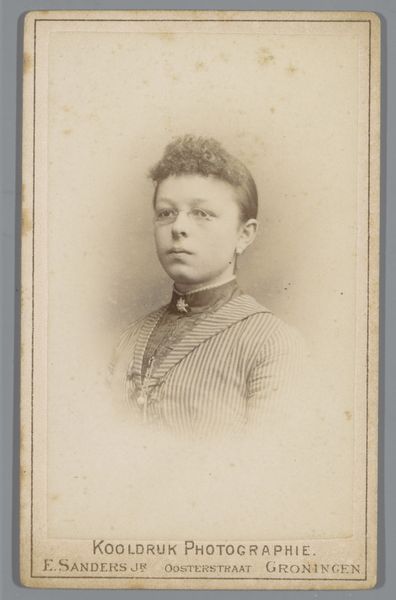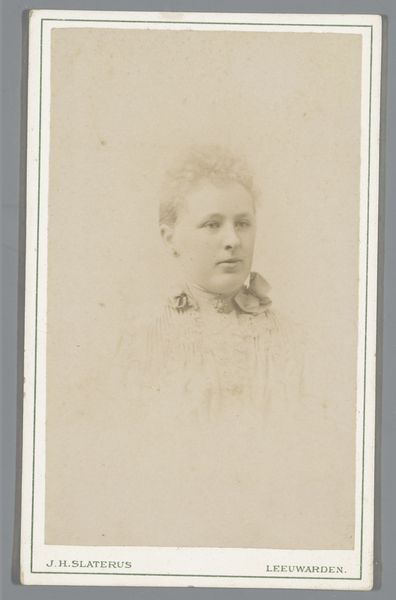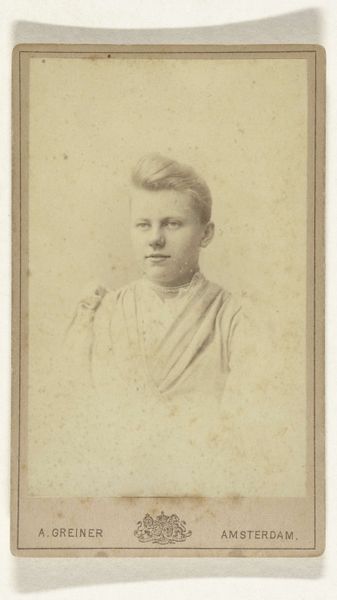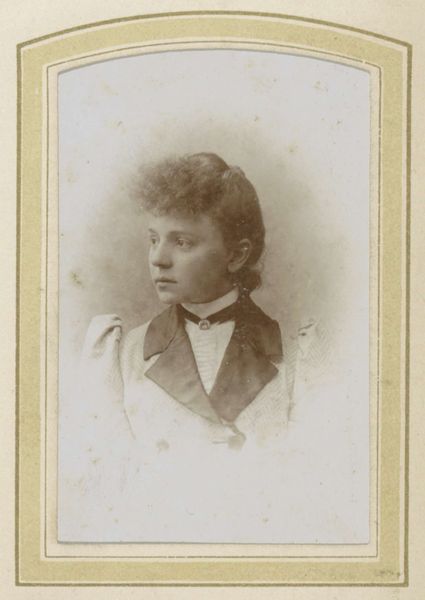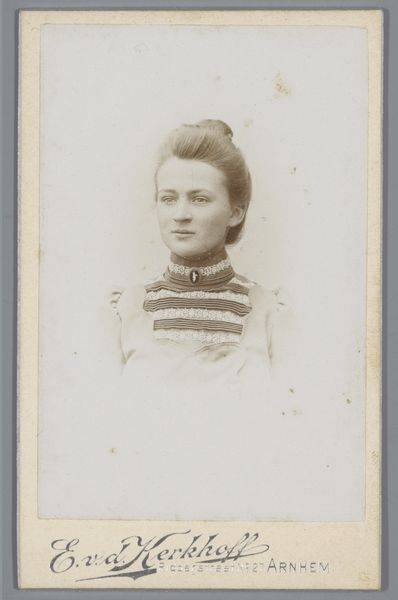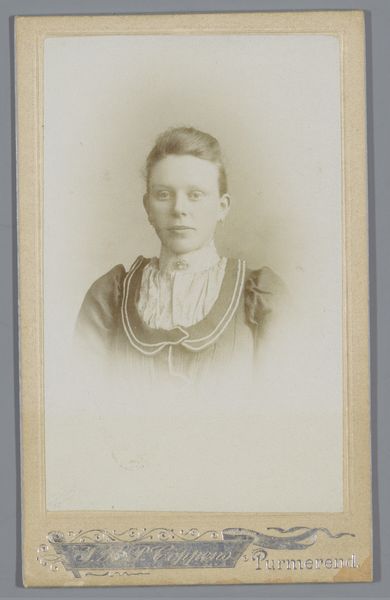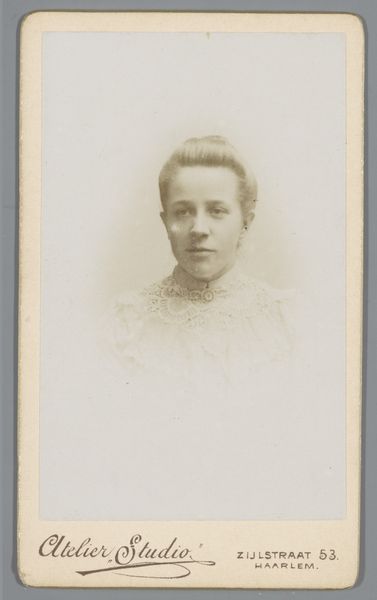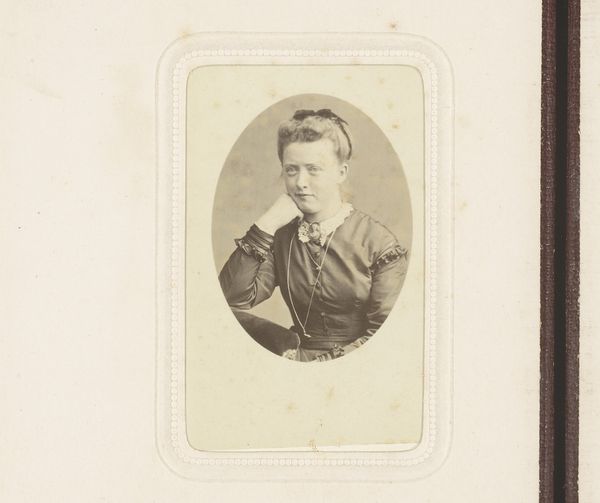
photography
#
portrait
#
photography
#
historical fashion
#
genre-painting
Dimensions: height 106 mm, width 65 mm
Copyright: Rijks Museum: Open Domain
Curator: Albert Greiner's photograph, "Portret van een onbekende vrouw," created between 1883 and 1887, is quite captivating. It now resides here at the Rijksmuseum. What are your initial impressions? Editor: Austere. And surprisingly modern, in a way. The muted tones emphasize the woman’s direct gaze, but there's also a sort of vulnerability despite the stiff pose. What does this piece tell us about photography’s evolving role in society at the time? Curator: Well, this image reflects how photography became accessible for portraiture to a growing middle class, eager to mimic the styles of the aristocracy. Look at the backdrop, it is utterly plain! This speaks volumes about studio processes and the labor involved in constructing and manipulating these early photographs. Editor: The historical fashion speaks volumes though. The ruffled collar, the brooch, the puffed sleeves - visual symbols communicating status, respectability. Almost like an aspirational uniform for the burgeoning middle class you mentioned. Curator: Precisely. Each detail in her attire, carefully selected and presented, tells us about Victorian-era notions of self-presentation and material culture, not just what someone wanted to project to the world, but the constructed labor of creating those commodities and assembling them. The clothing signifies industry. Editor: The question of the "unknown woman" looms large, though. Her identity, lost to history, only reinforces her symbolic representation as an Everywoman of her era. Does her anonymity enhance or detract from the photographic experience? Curator: It's a crucial tension. It depersonalizes the sitter but brings into focus the mass reproducibility of photographs and the construction of idealized identities for sale in commercial contexts. Were these items store bought or tailor made? It is worth considering her brooch may have once carried its own sentimental meaning, its origins and maker unknown. Editor: Ultimately, photography serves as this mirror reflecting societal norms, ambitions, even anxieties. The sitter presents the era so eloquently. I will never see photographs the same again, looking at these commodities themselves. Curator: Absolutely. A lens on both individual identity and broader systems of production that supported the world.
Comments
No comments
Be the first to comment and join the conversation on the ultimate creative platform.
